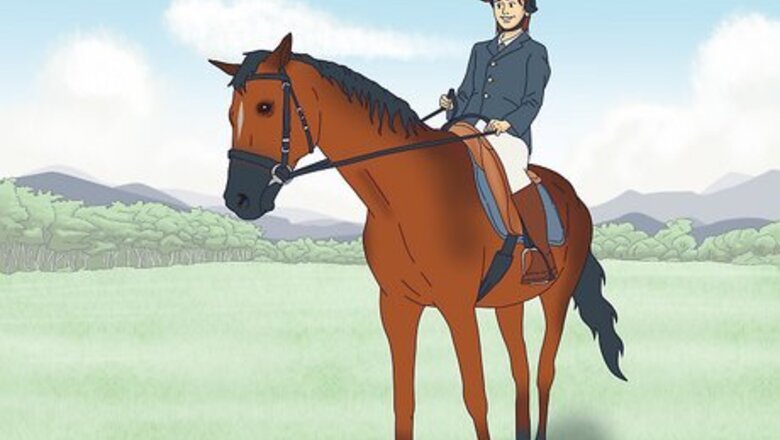
views
Cantering
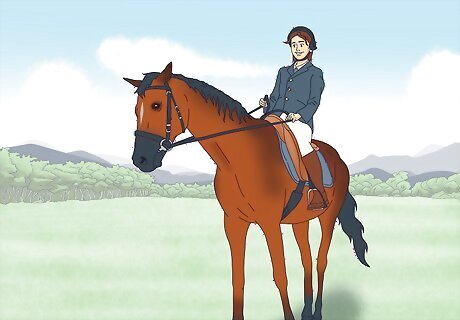
Prepare to canter your horse. The lope builds off a canter, so you have to canter first. The canter, a three-beat gait, comes easily to some horses and riders but not to others. To canter your horse, you must be relaxed in the saddle, and be sure not to have your stirrups too short. Some common issues with cantering include too much rigidity, particularly in the lower back, bouncing in the saddle, and trying to keep too much control with your knees. Sit tall and don’t lean forward Keep your seat in the saddle Have your weight on your heels The reins are light in your hands -- your horse should not be pulling
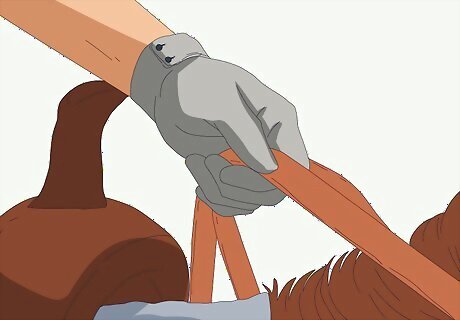
Ask your horse to canter. Your horse needs to respond to a series of cues that you give each time you want to canter. If your first effort doesn’t succeed -- don’t worry. Many horses take a while to figure out exactly what you want them to do. For a left lead, you need to softly close your right hand around the outside rein. Do a steady squeeze and release on the inside rein using your left hand. Use your inner left leg to add pressure. This is asking your horse to get ready to canter. Have your right leg back behind the girth. When you are ready to start cantering, move your right leg in front of the girth and give a gentle bump.
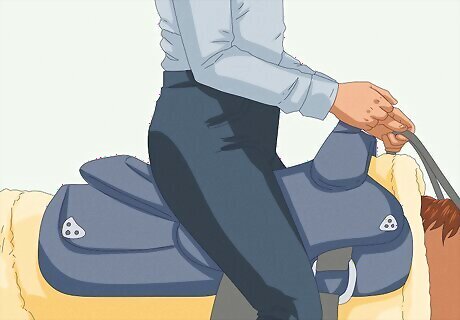
Keep your seat in. All riding revolves around your seat (bottom). You use it to stop, to go and to turn, as well as to back, side pass -- essentially everything involved in riding. When you lope, your seat is what keeps you in. Because the lope is a slower pace, it is seen as smoother, but when you are on the horse for the first time at a lope, it may seem a little bouncy.
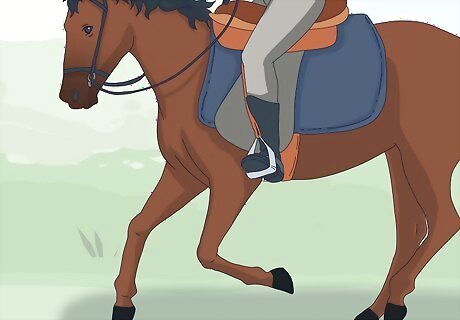
Establish a good canter. The pace will be forward and moving, but will be easy enough to slow down as necessary. Try placing a few poles in your riding area, spaced far enough apart so that you can keep a canter going over each and around. You will soon notice that after a few laps your horse has settled into an established canter of 3 footfalls. This is the very first step to getting a horse to lope. A horse needs to be traveling at the correct speed and have the correct footfalls to be able to slow and handle the required pace.
Starting to Lope
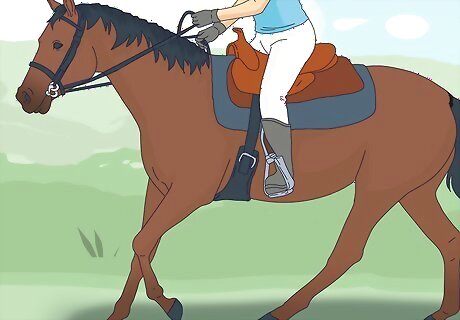
Maintain a canter by pushing forward. If your horse tires, then come back to a trot, which is slower than a canter, and let him settle and rest. Then return to a canter as your horse gains back energy. If your horse proceeds, you can start to get a lope.
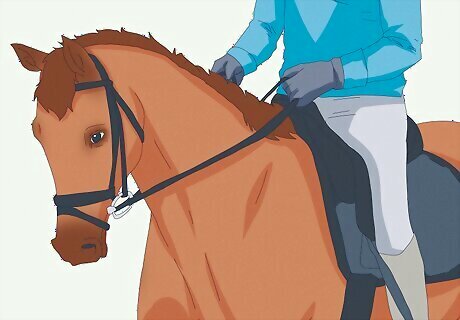
Check your horse’s pace. Squeeze the reins one at a time and slightly sit deeper -- imagine you are a sack of potatoes for this exercise. Squeeze your legs onto your horse. This will encourage your horse to pause slightly, which is the tool to get them to slow. When you get a slight pause, release your legs slightly while maintaining a forward leg pressure. Release your hands also and move him into the stride. Repeat this step about three or 4 times until you have a slow canter, or lope.
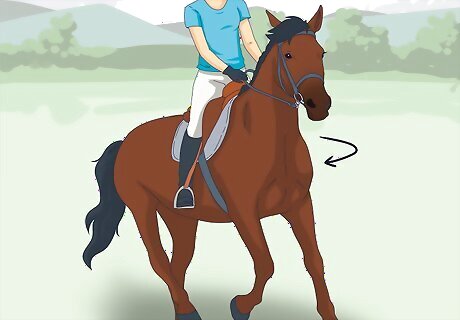
Work on your lope departure. When moving from a walk or jog to a lope, lift your hand slightly. At the same time you squeeze with your outside leg, ask the horse to flex a little to the inside. Do this as you are pushing your horse in the direction you want. It’s at that point that you will ask your horse to go into a lope. You can do this a couple of ways: You can add more pressure from your leg or your spur You can combine either leg pressure or spur pressure with a sound
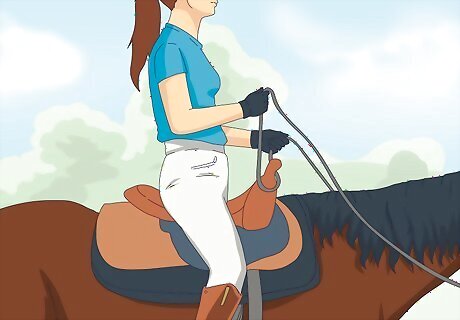
Maintain proper lope technique.Your body should be able to sit deeper than when riding at a canter, as the bounce should now be gone. The bounce will have been replaced with a soft seat, with a slight elevation of the legs in mid-suspension. This is hard to feel as you start out, but as you improve you will be able to feel the suspension. All of this is in your legs -- your reins need to be loose.
Practicing Loping
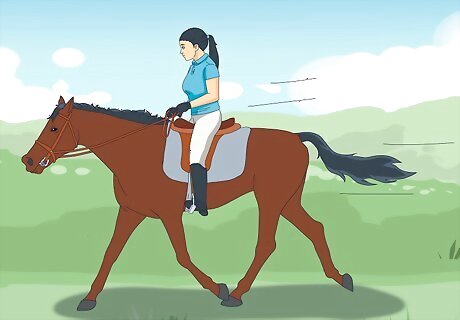
Lope for a good few laps. Then take a break by trotting or walking your horse. Begin the steps above again to allow your horse to practice getting into the gait. As you advance in your loping ability you will be able to see a huge improvement in your horse’s posture, as well as his awareness of your riding and a faster response to your commands for lope.
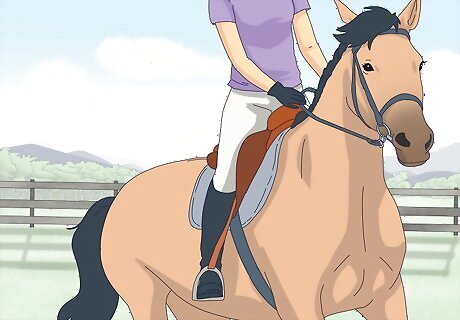
Keep practicing. Like any new skill, your horse needs time to master loping. Each stride will have three footfalls, but should be a slower and more relaxed pace. As your lope becomes maintained and correct, you will be able to proceed to getting your horse to lower its head and be suitable for a western class.
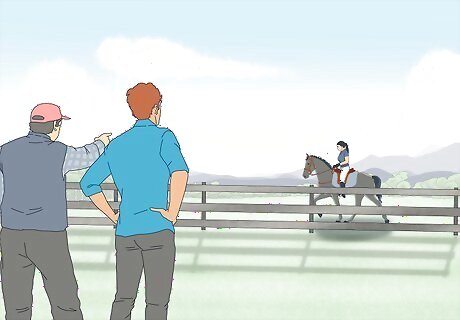
Ask someone to observe you. Even if you think that you have loping down, it’s best to get someone to watch you and your horse to make sure it’s all working as you hope. Sometimes it’s obvious to an outside observer that you need to make a small change in order to become truly proficient at loping.


















Comments
0 comment